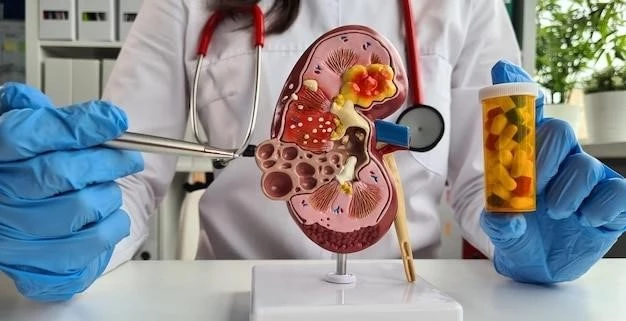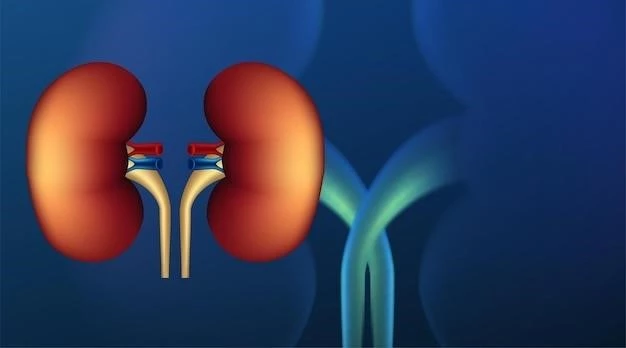Article Plan⁚ Disease ‒ Urinary Tract Neoplasm
Overview of Urinary Tract Neoplasms
Urinary tract neoplasms encompass various types of cancers that develop in the cells of the urinary system. The most common among them is bladder cancer, arising from the bladder’s lining cells. Urothelial carcinoma accounts for a significant portion of urinary tract neoplasms. The urinary tract includes the kidneys, ureters, bladder, and urethra.
Bladder cancer, a prevalent subtype, often presents with symptoms like blood in the urine. Urothelial cancer primarily affects the bladder but can also develop in the upper urinary tract. Understanding the types and characteristics of these neoplasms is crucial for early detection and effective management.
Types of Urinary Tract Neoplasms
Urinary tract neoplasms encompass various types, with bladder cancer being the most common type that originates in the bladder’s cells. Urothelial carcinoma, accounting for a significant portion of these neoplasms, predominantly affects the bladder. Other types include squamous cell carcinoma, adenocarcinoma, and urothelial papilloma. Understanding these diverse types is crucial for accurate diagnosis and tailored treatment approaches.
Additionally, urothelial cancer can affect the lining of the entire urinary system, with urothelial cancers of the kidney or ureter being subsets of this malignancy. Differentiation between low-grade papillary tumors and high-grade invasive tumors is essential for prognosis and treatment planning.
Furthermore, primary bladder neoplasms can be categorized into flat and papillary lesions, each requiring specific management strategies for optimal outcomes. Awareness of the various types of urinary tract neoplasms is fundamental for healthcare professionals in delivering appropriate care and support to affected individuals.
Risk Factors for Urinary Tract Neoplasms
Risk factors associated with urinary tract neoplasms include smoking, exposure to certain chemicals (such as arsenic and aromatic amines), chronic bladder inflammation or infections, and a history of bladder cancer. Additionally, individuals with a family history of bladder cancer or genetic predispositions, such as Lynch syndrome, are at higher risk. Age, gender (men are more susceptible), and race also play a role in the development of these neoplasms. Understanding these risk factors is essential for early detection and preventive strategies.
Symptoms and Diagnosis of Urinary Tract Neoplasms
Common symptoms of urinary tract neoplasms include blood in the urine, frequent urination, pain during urination, abdominal pain, unexplained weight loss, fatigue, and pelvic discomfort. However, early stages may not present noticeable symptoms, emphasizing the importance of regular screenings for individuals with risk factors. Diagnosis typically involves urinalysis, imaging tests like CT scans or MRIs, cystoscopy, and biopsy for definitive confirmation. Early and accurate diagnosis is crucial for timely intervention and improved outcomes.
Treatment Options for Urinary Tract Neoplasms
Treatment options for urinary tract neoplasms include surgery, chemotherapy, radiation therapy, and immunotherapy; Surgical interventions, such as transurethral resection for early-stage bladder cancer or radical cystectomy for advanced cases, aim to remove cancerous tissues. Chemotherapy and radiation therapy may be used alone or in combination to target cancer cells. Immunotherapy drugs like checkpoint inhibitors boost the immune response against cancer cells. The choice of treatment depends on the type and stage of the neoplasm, aiming for optimal outcomes and improved quality of life for patients.
Surgery for Urinary Tract Neoplasms
Surgical intervention plays a crucial role in the management of urinary tract neoplasms. Procedures such as transurethral resection are common for early-stage bladder cancer, while radical cystectomy may be necessary for advanced cases. Surgical techniques aim to remove cancerous tissues effectively while preserving organ function and patient quality of life. Different surgical approaches are utilized based on the location and extent of the neoplasm, with the ultimate goal of complete resection and optimal oncologic outcomes.

Chemotherapy and Radiation Therapy for Urinary Tract Neoplasms
Chemotherapy and radiation therapy are essential components of treatment for urinary tract neoplasms. Chemotherapy involves the use of drugs to target and destroy cancer cells, either before surgery to shrink the tumor or after to eliminate any remaining cancerous cells. Radiation therapy utilizes high-energy rays to kill cancer cells and may be used in combination with other treatments. These approaches aim to reduce tumor size, prevent spread, and improve overall outcomes for individuals with urinary tract neoplasms.
Immunotherapy for Urinary Tract Neoplasms
Immunotherapy is an innovative treatment approach for urinary tract neoplasms that aims to harness the body’s immune system to target and destroy cancer cells. Through strategies like checkpoint inhibitors, immunotherapy enhances the immune response against cancer, potentially leading to long-term remission in some patients. This cutting-edge treatment option offers new hope for individuals with advanced or recurrent urinary tract neoplasms by unlocking the immune system’s potential to combat cancer.
Prognosis and Survival Rates of Urinary Tract Neoplasms
Prognosis and survival rates for urinary tract neoplasms vary depending on factors such as the type and stage of the cancer, the individual’s overall health, and the chosen treatment strategy. Early-stage diagnoses generally have better prognoses than advanced cases. Survival rates can be influenced by timely intervention, accuracy of diagnosis, and the effectiveness of treatments like surgery, chemotherapy, radiation therapy, and immunotherapy. Regular follow-ups and adherence to treatment plans are crucial for improving outcomes and long-term survival for individuals with urinary tract neoplasms.
Prevention Strategies for Urinary Tract Neoplasms
Preventive strategies for urinary tract neoplasms include avoiding tobacco and exposure to harmful chemicals, maintaining a healthy weight, staying hydrated, and adopting a balanced diet rich in fruits and vegetables. Regular medical check-ups, especially for individuals with known risk factors, can aid in early detection and intervention. Additionally, prompt treatment of urinary infections and following a physician-recommended screening schedule are vital preventive measures. Educating individuals on these strategies can potentially reduce the incidence and impact of urinary tract neoplasms.
Latest Research and Advancements in Urinary Tract Neoplasms
Researchers are continually exploring new avenues in the diagnosis and treatment of urinary tract neoplasms. Recent studies have focused on understanding the genetic and molecular characteristics of these cancers to develop targeted therapies. Emerging advancements in immunotherapy, precision medicine, and genetic profiling offer promising avenues for personalized cancer treatment. Additionally, ongoing research aims to enhance early detection methods through innovative imaging technologies and biomarker identification, paving the way for improved outcomes and quality of life for individuals with urinary tract neoplasms.

Impact of Urinary Tract Neoplasms on Patients’ Quality of Life
Urinary tract neoplasms can significantly impact patients’ quality of life due to physical symptoms, emotional distress, and treatment side effects. The disease may affect daily activities, lead to pain or discomfort, and cause psychological stress. Treatment interventions like surgery, chemotherapy, and radiation therapy can also pose challenges and impact overall well-being. Supportive care, including counseling, pain management, and rehabilitation services, plays a crucial role in addressing these issues and improving the quality of life for individuals dealing with urinary tract neoplasms.
Conclusion and Future Outlook for Urinary Tract Neoplasms
In conclusion, urinary tract neoplasms present a significant health challenge, impacting patients’ well-being and requiring multidisciplinary approaches for effective management. The evolving landscape of research has paved the way for innovative treatments such as immunotherapy and personalized medicine, offering hope for improved outcomes.
Looking ahead, focusing on early detection strategies, advancing treatment modalities, and enhancing support services are crucial for enhancing patient care and quality of life. Collaborative efforts in research and clinical practice will continue to drive advancements in the field, ultimately striving towards better prognosis and survival rates for individuals affected by urinary tract neoplasms.
